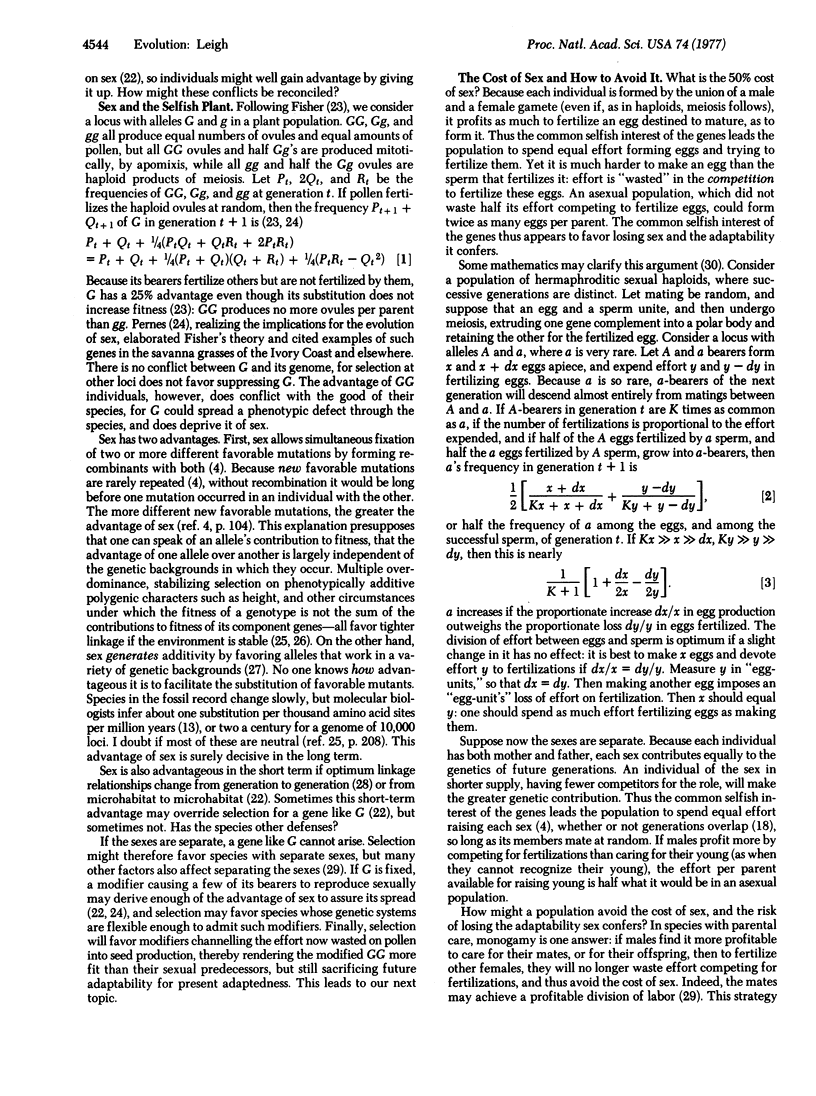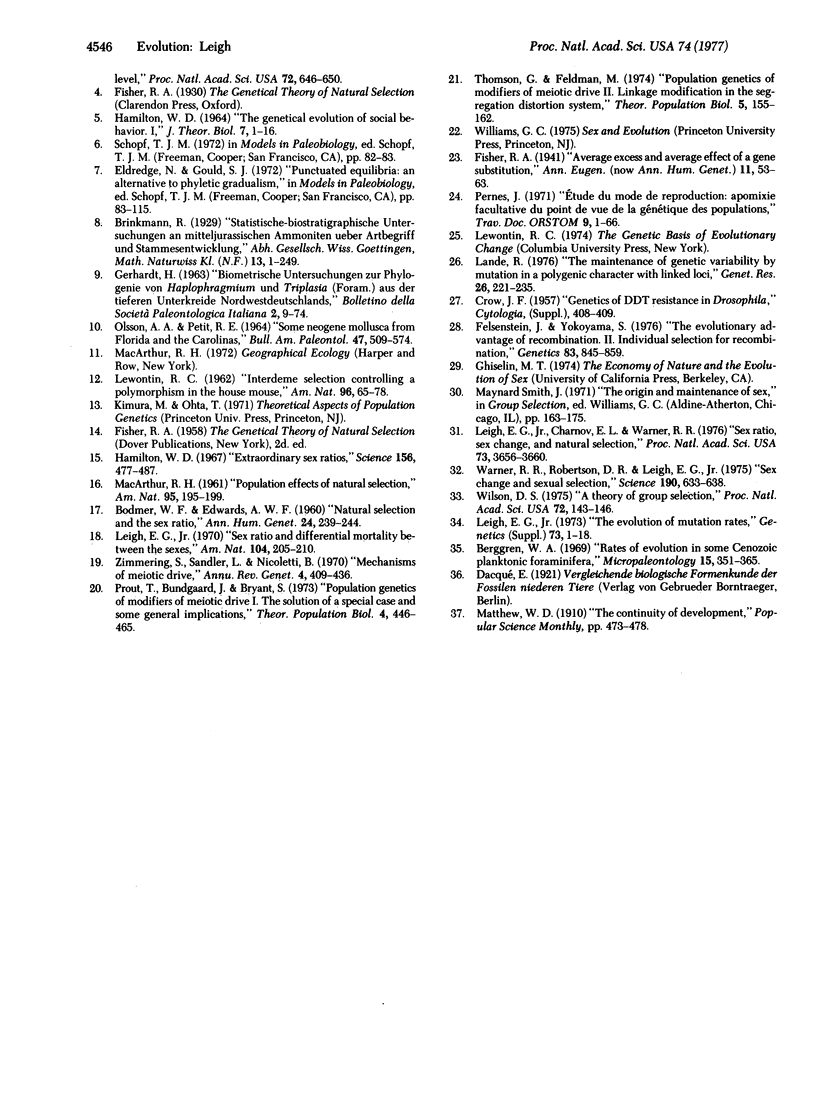Abstract
An individual's advantage often conflicts with the good of its group, as when an allele spreads by meiotic drive through a population whose death rate it increases, or when an asexual genotype derives immediate advantage at the expense of future adaptability. We show how selection within populations may reconcile individual and group advantage, as in the evolution of “honest meioses” resistant to segregation distortion, and the avoidance of the “cost of sex.” Selection between species, whose evolutionary importance we document, presumably favors the survival and multiplication of species whose genetic systems or social organizations favor the evolution of mechanisms reconciling individual with group advantage: in other words, species with genetic or social systems where a gene's long-term selective advantage most nearly matches its contribution to the good of the species.
Keywords: paleontology, population genetics, selection between species, segregation distortion, sex ratio
Full text
PDF




Selected References
These references are in PubMed. This may not be the complete list of references from this article.
- BODMER W. F., EDWARDS A. W. Natural selection and the sex ratio. Ann Hum Genet. 1960 Jul;24:239–244. doi: 10.1111/j.1469-1809.1960.tb01735.x. [DOI] [PubMed] [Google Scholar]
- Felsenstein J., Yokoyama S. The evolutionary advantage of recombination. II. Individual selection for recombination. Genetics. 1976 Aug;83(4):845–859. doi: 10.1093/genetics/83.4.845. [DOI] [PMC free article] [PubMed] [Google Scholar]
- Hamilton W. D. Extraordinary sex ratios. A sex-ratio theory for sex linkage and inbreeding has new implications in cytogenetics and entomology. Science. 1967 Apr 28;156(3774):477–488. doi: 10.1126/science.156.3774.477. [DOI] [PubMed] [Google Scholar]
- Hamilton W. D. The genetical evolution of social behaviour. I. J Theor Biol. 1964 Jul;7(1):1–16. doi: 10.1016/0022-5193(64)90038-4. [DOI] [PubMed] [Google Scholar]
- Lande R. The maintenance of genetic variability by mutation in a polygenic character with linked loci. Genet Res. 1975 Dec;26(3):221–235. doi: 10.1017/s0016672300016037. [DOI] [PubMed] [Google Scholar]
- Leigh E. G., Jr, Charnov E. L., Warner R. R. Sex ratio, sex change, and natural selection. Proc Natl Acad Sci U S A. 1976 Oct;73(10):3656–3660. doi: 10.1073/pnas.73.10.3656. [DOI] [PMC free article] [PubMed] [Google Scholar]
- Prout T., Bundgaard J., Bryant S. Population genetics of modifiers of meiotic drive. I. The solution of a special case and some general implications. Theor Popul Biol. 1973 Dec;4(4):446–465. doi: 10.1016/0040-5809(73)90020-8. [DOI] [PubMed] [Google Scholar]
- Thomson G. J., Feldman M. W. Population genetics of modifiers of meiotic drive. II. Linkage modification in the segregation distortion system. Theor Popul Biol. 1974 Apr;5(2):155–162. doi: 10.1016/0040-5809(74)90038-0. [DOI] [PubMed] [Google Scholar]
- Warner R. R., Robertson D. R., Leigh E. G., Jr Sex change and sexual selection. Science. 1975 Nov 14;190(4215):633–638. doi: 10.1126/science.1188360. [DOI] [PubMed] [Google Scholar]
- Wilson D. S. A theory of group selection. Proc Natl Acad Sci U S A. 1975 Jan;72(1):143–146. doi: 10.1073/pnas.72.1.143. [DOI] [PMC free article] [PubMed] [Google Scholar]
- Zimmering S., Sandler L., Nicoletti B. Mechanisms of meiotic drive. Annu Rev Genet. 1970;4:409–436. doi: 10.1146/annurev.ge.04.120170.002205. [DOI] [PubMed] [Google Scholar]


